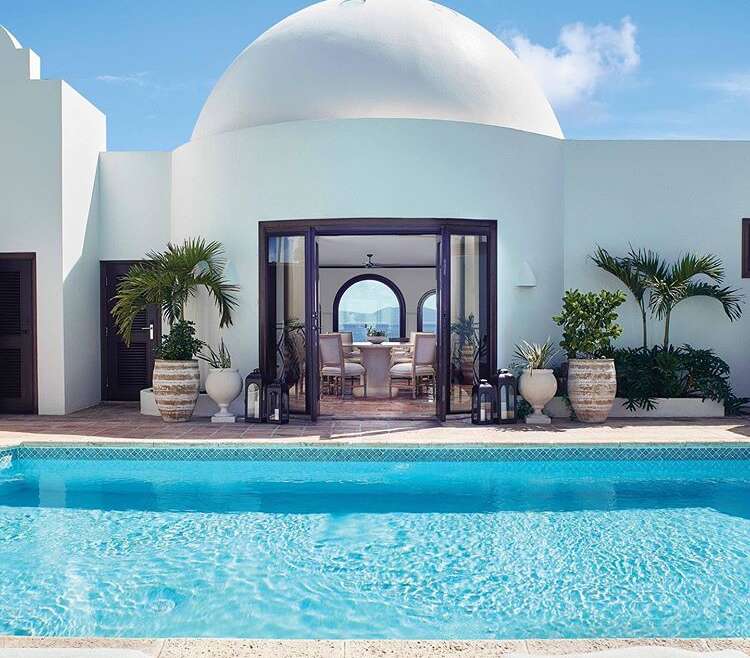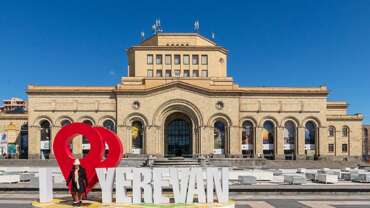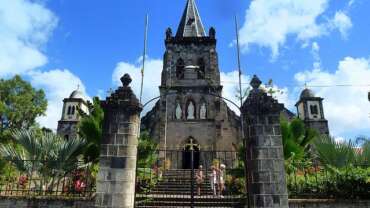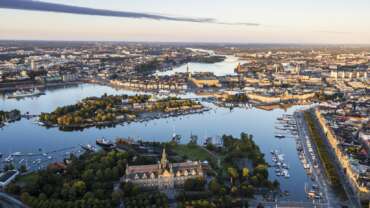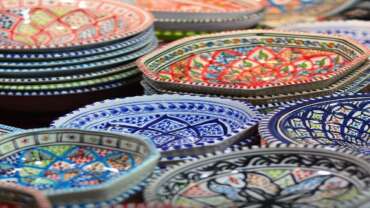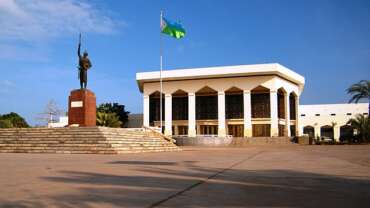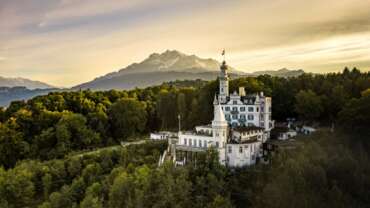Anguilla - Feeling is Believing
Anguilla, island in the eastern Caribbean Sea, a British overseas territory. It is the most northerly of the Leeward Islands in the Lesser Antilles and lies about 12 miles (19 km) north of the island of Saint Martin and 60 miles (100 km) northwest of Saint Kitts. The Valley is the principal town and the administrative centre of the island. Noted for its easygoing atmosphere and magnificent beaches and waters, Anguilla is a popular tourist destination.
Anguilla is bare and flat and is fringed by white sand beaches. It is 16 miles (26 km) long and a maximum of 3.5 miles (6 km) wide; its long thin shape gave the island its name (French: anguille, “eel”). The territory includes several small uninhabited offshore islands, the largest of which are Dog, Scrub, and Sombrero islands and the Prickly Pear Cays.
History of Anguilla
Long before the arrival of Christopher Columbus in the Caribbean, Anguilla had been settled by Arawakan-speaking Indians who called it Malliouhana. They were originally from the Orinoco River basin of South America and arrived on the island about 2000 bce.
Anguilla was colonized in 1650 by British settlers from Saint Kitts and thereafter remained a British territory, administered as part of the Leeward Islands colony. The British did not encounter any Arawaks on the island, but in 1656 a raid by Indians from one of the neighbouring islands wiped out their settlement. The early years were difficult for the colonists. In 1666 a French expedition attacked the island, and in 1688 a joint Irish-French attack forced most of the colonists to seek refuge on Antigua.
During the latter part of the 17th century, the poor yield from tobacco (the island’s principal cash crop) and from cotton created economic hardship. However, in response to the increasing demand for sugar in Europe, the settlers began producing sugarcane, using enslaved Africans, in the early 18th century. Sugar, which yielded better returns than tobacco or cotton, transformed an economy made up primarily of European small farmers into one in which the labouring class was composed mostly of African slaves working on sugar estates.
Anguilla’s economic and social development was frequently disrupted by European political conflicts that spilled over into the Caribbean. The French attacked the island in 1745 but were repelled by the local militia. They attacked again in 1796, causing much destruction, but were eventually forced to withdraw with great loss.
Conditions in Anguilla were influenced not only by European conflicts but also by political expediency. The British government thought it convenient to have Saint Kitts make laws for Anguilla and therefore created a legislative union between them (1825), although the Anguillan freeholders who owned the sugar estates protested strongly. Anguilla was ruled directly from Saint Kitts. Britain ended slavery in the colonies in 1834, and over the next few years many of the plantation owners sold their land to former slaves and returned to the United Kingdom. The lack of any meaningful economic development on the island heightened Anguillan discontent with the union. In 1872 the islanders petitioned the British government to dissolve the union and administer the island directly from Britain. The petition was ignored, and in 1882 a British Federal Act united Saint Kitts, Nevis, and Anguilla as a constituent part of the Leeward Islands Federation.
During the early 1890s, Anguillans endured much suffering when prolonged droughts led to severe famine. Such conditions and the Great Depression of the 1920s and ’30s—which affected the entire Caribbean but hit poverty-stricken Anguilla particularly hard—caused many Anguillan workers to migrate to the Dominican Republic to work in the sugarcane fields. Others found work in Aruba and Curaçao.
A series of labour disturbances throughout the British West Indies in the 1930s spurred the creation of a royal commission (popularly known as the Moyne Commission) to examine social and economic conditions in the islands. The commission advocated political and social reforms, and its findings hastened the democratization of the political process. Anguilla was granted universal adult suffrage in 1952. Further changes occurred in 1956—with the dissolution of the Leeward Islands Federation and the designation of Saint Kitts, Nevis, and Anguilla as a crown colony—and in 1958, when the three islands formed a single political unit within the West Indies Federation. After the federation’s collapse in 1962, the British government attempted a federation of the smaller territories; when that, too, failed, most of the islands were granted new constitutions that provided for statehood in association with Britain. In 1967 Anguilla became part of an associated state with Saint Kitts and Nevis, again contrary to the wishes of Anguilla, which ejected the Saint Kitts police, set up its own government, and proclaimed an independent republic.
Negotiations for a peaceful resolution of the conflict failed, and British troops intervened in March 1969. British rule was restored and a temporary commissioner was installed. Subsequently, the Anguilla Act of July 1971 placed the island directly under British control. A new constitution in 1976 gave the island a ministerial system of government and provided a larger measure of internal autonomy under the Crown. In 1980 Anguilla formally became a dependent territory (from 2002, overseas territory) of the United Kingdom, and a new constitution became effective in 1982; it was amended in 1990. Anguilla has developed into a stable parliamentary democracy with a growing economy, a consequence of massive injections of foreign capital, mainly from the United States, during the early years of the 21st century.
People of Anguilla
The majority of the population of Anguilla is of African descent. English is the official language. Most of the population is Christian, and the main religious denominations are Anglican and Methodist. The island has experienced steady population growth, and Anguillans live relatively long lives.
Cultural Life of Anguilla
Cultural milieu
The evolution of Anguilla’s society was, as elsewhere in the Caribbean, a legacy of plantation sugar and slavery, although conditions in Anguilla were somewhat anomalous for the region. The island’s thin soil and inadequate rainfall adversely affected the quantity and quality of its sugar crop; these factors made production less profitable than on other Caribbean islands, where large areas of fertile soil and adequate rainfall created lucrative sugar plantations that evolved into societies with a large labouring class. On those islands, after emancipation was declared in the British and French colonies in the first half of the 19th century, the plantation remained the dominant economic and social institution. Most of the ex-slaves were left landless and dependent on wage labour for a large portion of their incomes. On Anguilla, however, once the slaves were emancipated, the European-descended planters migrated elsewhere, and their lands were either taken over or bought by the ex-slaves. Thereafter, Anguilla evolved into a society of small farmers, sailors, and fishermen with much personal independence.
Anguilla’s smallness, in terms of both its geographical area and population, contributed to the creation of a close-knit society. Indeed, Anguillans are renowned for their habit of greeting other people, whether they know them or not, either verbally or by at least raising a hand in salutation.
Daily life and social customs
The day-to-day life of Anguilla’s people is similar to that of North Americans. Presumably this is a consequence of the island’s close proximity to the United States (and its Caribbean territories) and of the heavy dependence of the Anguillan economy on U.S. tourists. The impact of the United States’s cultural influence is reinforced by the prevalence of American music, television, and other media. Computer use is relatively widespread in businesses, schools, and homes. A significant number of people are computer literate and have access to Internet services. Cellular phones are popular among the young and middle-aged.
Family ties in Anguilla tend to be strong. Even though the nuclear family is dominant, single-parent families are common, generally headed by a mother and, on average, comprising two or three children. As mothers have become more economically active during the late 20th and early 21st centuries, their younger children have been either left under the care of older siblings or, in the case of wealthier mothers, placed in day-care centres. The extended role of mothers has changed the pattern and significance of traditional family meals. Dining arrangements are scattered. The main meal, consisting of some form of meat, along with peas and rice (a staple dish) and vegetables, is usually cooked early in the morning, and family members eat when it is convenient.
Cultural institutions
The island’s cultural showpiece is the annual Summer Festival, or Carnival, which takes place in late July–early August. Its main events include beauty pageants, a Calypso Monarch competition, musical performances, and a Parade of Troupes, in which costumed teams of dancers perform in the streets. The Summer Festival is a cultural potpourri highlighting the art, artistry, innovation, and imagination of the people. Holidays that involve notable public festivities include Anguilla Day (May 30, commemorating the high point of the 1967 revolution in which Anguilla severed its constitutional ties with Saint Kitts), August Monday (the first Monday in August, celebrated as a holiday marking the emancipation of the slaves in the former British Caribbean), August Thursday (the traditional boat-racing holiday following August Monday), and Boxing Day.
Explore the Islands
The Valley
It is the home of government and commerce, the Clayton J. Lloyd International Airport, and the Anguilla Tourist Board. Here you will also find the island’s only surviving plantation house, the beautifully restored Wallblake House, built in 1785, offers a glimpse into Anguilla’s colonial heritage.
On the road to Crocus Hill is the area of town that Anguillians refer to as The Old Valley. Here there are a number of architectural examples from Anguilla’s history — Ebenezer’s Methodist Church, Miss Marjorie’s House, The Warden’s Place, Rose Cottage, and other graceful buildings, all a reminder of Anguilla’s beautiful past.
The legendary Lloyds B&B, in operation since the 1950’s, a selection of Charming Escapes, and the luxury villa resort CeBlue overlooking Crocus Bay are all situated in and around The Valley.



